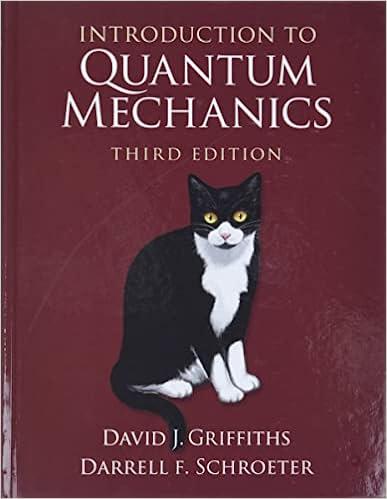Imagine a bead of mass m that slides frictionlessly around a circular wire ring of circumference L.
Question:
Imagine a bead of mass m that slides frictionlessly around a circular wire ring of circumference L. (This is just like a free particle, except that Ψ (x+L) = Ψ (x).) Find the stationary states (with appropriate normalization) and the corresponding allowed energies. Note that there are (with one exception) two independent solutions for each energy En — corresponding to clockwise and counter-clockwise circulation; call them Ψn+ (x) and Ψn- (x). How do you account for this degeneracy, in view of the theorem in Problem 2.44 (why does the theorem fail, in this case)?
Problem 2.44
If two (or more) distinct solutions to the (time-independent) Schrödinger equation have the same energy E, these states are said to be degenerate. For example, the free particle states are doubly degenerate—one solution representing motion to the right, and the other motion to the left. But we have never encountered normalizable degenerate solutions, and this is no accident. Prove the following theorem: In one dimension (-∞ < x < ∞) there are no degenerate bound states.
Step by Step Answer:

Introduction To Quantum Mechanics
ISBN: 9781107189638
3rd Edition
Authors: David J. Griffiths, Darrell F. Schroeter





